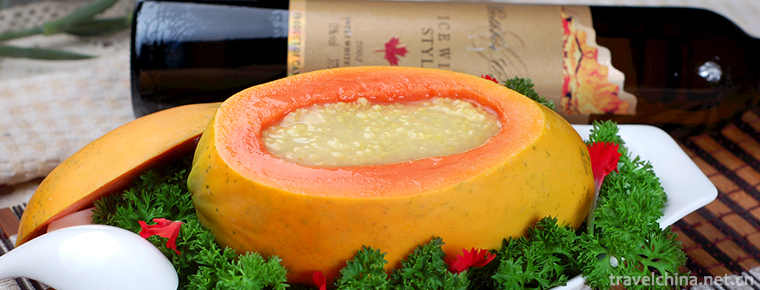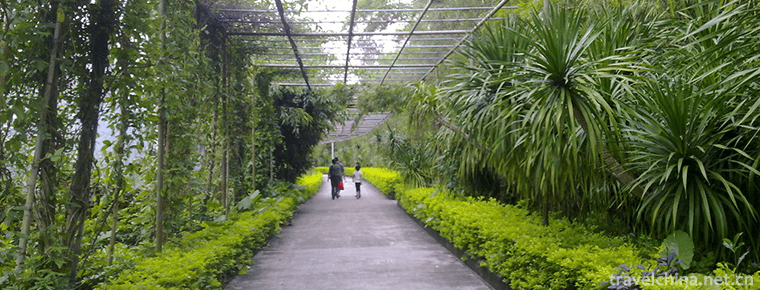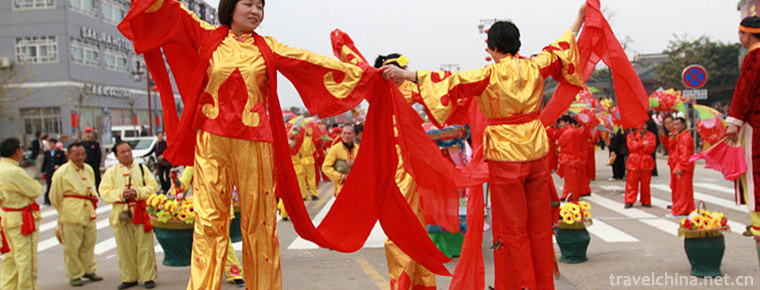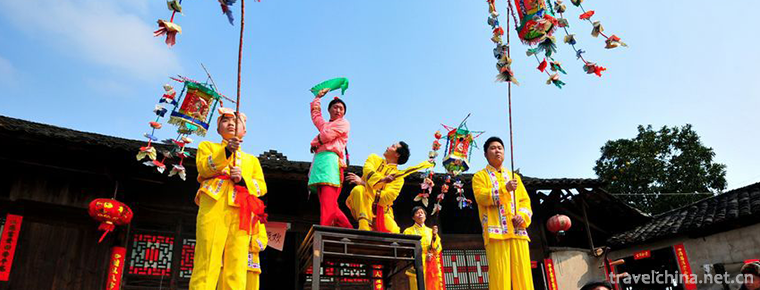Caozhou Peony Garden
Caozhou Peony Garden is located in Renmin North Road, Peony District, Heze City, Shandong Province. It is the largest and most diverse peony garden in Heze City. It is a national AAAA-level tourist attraction. The garden consists of five large-field peony scenic areas: theme peony scenic area, Caozhou peony garden ancient spectrum area, mulberry fence garden ancient spectrum flower area, Peony Peony scientific research exhibition area, award-winning peony flower field and lake mountain landscape area, field interesting water scenic area, world national garden scenic area, four seasons peony scenic area, twelve flower god scenic area and so on.
There are many scenic spots in the peony garden, among which the national flower Museum in the south is the only peony theme museum in China. The peony greenhouse in the north is the only greenhouse for peony viewing in all seasons in China. There are also 39 scenic spots such as Guofeng Garden, Guohua Gate, Guohua Soul, Tianxiangge Pavilion, Guiling Stele, Peony Legend and various pavilions and water pavilions.
Caozhou Peony Garden covers an area of 1.06 million square meters, with 1,237 peony varieties, totaling 800,000 plants, more than 600 peony species, and more than 200 other trees, shrubs and ground cover plants. It is the largest plant garden with the largest planting area and the largest variety of peony and peony in the world.
Heze, known as Caozhou in ancient times, is the hometown of Fuxi Sangzi Yao and Shun. Heze peony cultivation has a history of nearly a thousand years. In the history of peony development in China, the Ming and Qing dynasties have been flourishing for more than 500 years.
Tourism Culture
Historical site
Peony Pavilion East, an Eastern ornamental area, is based on the gardens of He Lou and Mao Hutong villages. The eastern part of the Peony Garden is close to the Gushui River of "Liuyin Cage Sandbank" and "Ten Miles of Fugu". It is the site of the battle of Guiling in the ancient battlefield. In 1997, a monument Pavilion of "Guiling Battle Site" was built.
Local specialities
The east side of Peony Garden, centered on Guilingtai, is the centralized producing area of Gengcai in Caozhou. Many persimmon trees in persimmon forest are old persimmon trees for hundreds of years or even hundreds of years. Gengzhuang Geng's fruit growers paid tribute in the Qing Dynasty, and the court named Gengcai. Su Yumei, a poet of the Qing Dynasty, has a poem cloud: "Guiling remains, Qi and Wei are empty. Only Qianlin persimmon, see October red. It seems like a cypress after frost, suspected to be a maple in the late Yangtze River. Branches hang like vermilion, better than peony bushes."
Myths and legends
Caozhou Peony Garden is the flourishing period of Heze peony before and after the annual grain rain. In the peony garden, there are two pavilions of Han Baiyu peony fairies. The two peony fairies are called Gejie and Jade Edition. They married ordinary people and left behind a fairy tale.
According to the records in Strange Tales from Liaozhai, Luoyang people in Henan often hear about this "Caozhou Peony Jiaqilu" and yearn for it. One spring, I came to Caozhou to watch peony. In the apartment, there was a Peony Fairy Gejie who had a private meeting with him in the evening. They became partners and returned to Luoyang together. Later, Gejie's younger sister, Yuban, married Dayong's younger brother. Two couples of men and women worked and weaved, and they lived happily. A year later, each of the sisters gave birth to a boy, and the whole family was happy. But Dayong somehow got suspicious. He visited Caozhou and found that Gejie and Jade Edition were peony fairies. The divulgence of opportunity leads to the breakdown of husband and wife's feelings. Gejie and Yuban left their homes in anger and returned to Caozhou. This is the origin of "Gejie" and "Jade Edition" peony. Later, the people of Peony Township specially built "Gejie" and "Jade Edition" pavilions in the center of Peony Garden.
Honor
Heze Caozhou Peony Garden also has nearly 100 scientific research achievements. It has participated in the International Flower Exposition in Bordeaux, France and the "99 Kunming World Horticulture Exposition" on behalf of the country, and won a great prize. It has been designated as "National Peony, Peony Standardization Demonstration Park" and "Heze Research and Breeding Base of Heze Project". In 2008, Caozhou Peony Garden was rated as AAAA class tourist scenic spot by Shandong Tourism Bureau. In 2013, Caozhou Peony Garden Scenic Spot was approved as the national AAAA-level scenic spot by the National Tourism Administration Quality Grading Committee.
There are more than 40 scenic spots in Caozhou Peony Garden, such as the National Flower Hall, Huahai Qunfang, Heshan Liuxia, which have outstanding characteristics, rich cultural connotations and high ornamental taste. Every time around the valley rains, Huahai crowd becomes magnificent.
Peony in Caozhou Peony Garden belongs to the Central Plains Peony Population, with rich and colorful flowers and varied patterns. Its main colors are pink, red (including purple and red), purple, blue, yellow, white, black, green and polychrome. According to the flower morphology and the degree of male and female evolution, each color system can be divided into nine types: single petal type, lotus type, chrysanthemum type, togui type, rose type, golden ring type, crown type, Hydrangea type and billiard type. Peony is a deciduous shrub of Paeonia lactiflora family, which has a long history of cultivation.
The best time for Heze-Caozhou Peony Garden is from mid-April to early May, during which Heze International Peony Fair will be held annually. Heze International Peony Flower Festival is one of the famous peony tourism festivals in China. It has won the titles of "Top Ten National Flower Festivals" and "China's Most Influential Brand Exhibition". Heze has also been awarded the honorary titles of "China's Excellent Tourism City" and "China's Excellent Festival City". By holding peony flower fairs, not only the popularity of Heze peony has been improved, but also Heze has become a famous "Chinese Peony City" throughout the country.
In 2000, Heze was named "the land of Chinese peony" by China Flower Association. In 2006, Heze was named "Peony City of China". On March 16, 2012, the Chinese Flower Association officially named Heze as the "Peony Capital of China". According to the Regulations on the Naming and Licensing of the Chinese Flower Association and the declaration of the Heze Municipal People's Government, the Chinese Flower Association organized experts to inspect and appraise the city, and decided to name Heze as the "Capital of Peony in China". In the news documentary Taishan North and South, Heze peony is the best in the world, and the peony is the best in the world. Every year in mid-April, when peony flowers are in full bloom, Heze holds the International Peony Tourism Culture Festival.
On December 7, 2018, candidates from CCTV Financial Channel and PCCW Tourism sponsored the charm list of cultural tourism of "Charming China City" in 2018.
Traffic information
Caozhou Peony Garden is located on 220 National Highway to the west, Renmin Road to the East and urban area to the south. It is convenient to take buses and taxis. Out of the railway station, you can take bus No. 3 directly or by taxi.
Heze Railway Station is located at the junction of Beijing-Kowloon Line and Xinju Line. There is a Eurasian Continental Bridge-Longhai Line in the south. It can reach Beijing, Hong Kong, European Continent and Rizhao Port directly from here, and can reach all parts of the country. Peony Garden is located in the south of the city. Accommodation is available in the city.
East Gate of Caozhou Peony Garden:
No. 6 (bus terminus direct)
No. 37 (West Bus Station is direct)
West Gate of Caozhou Peony Garden:
8 roads, 16 roads
No. 3 (West Bus Station is direct)
No. 37 (West Bus Station is direct)
No. 50 (Railway Station Direct)




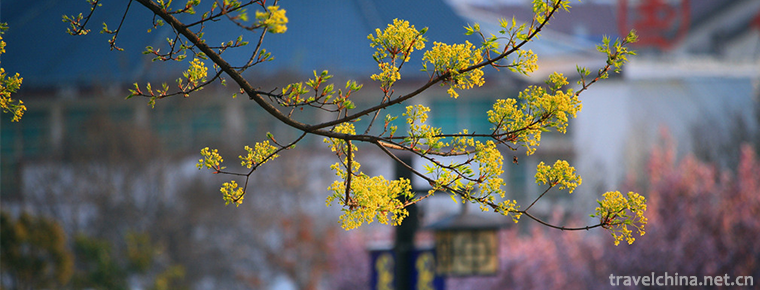
-
Pumpkin rice gruel
cut Pumpkin Peel into thin slices and rinse with millet. Put some water in the pot, put water into pumpkin millet and boil it in a big heat..
Views: 365 Time 2018-11-02 -
Legend of Meng Jiangnu
Meng Jiangnu's story, as one of the four love legends in ancient China (the other three are Niulang and Zhinu, Liang Shanbo and Zhu Yingtai, and The Legend of White Snake), has been widely circulated .
Views: 266 Time 2018-12-23 -
maoming forest park
Maoming Forest Park is located in the western suburb of Maoming City, Guangdong Province. It is only 12 kilometers away from the urban area and covers an area of more than 4500 mu.
Views: 185 Time 2019-02-07 -
Stilts
Stilts, also known as "Stilts Yangko", is a folk dance widely spread throughout the country. It is named for its many feet on stilts when dancing. Stilts have a long history, originating fro.
Views: 81 Time 2019-04-30 -
Hu Qingyutangs Traditional Chinese Medicine Culture
Hu Qingyutang's traditional Chinese medicine culture is one of the national intangible cultural heritages and the traditional trade customs preserved by Hu Qingyutang..
Views: 142 Time 2019-05-03 -
Xiushan Festive Lantern
Xiushan lantern is an important school of lantern art in southwest China. It is a folk cultural phenomenon and folk performing art that integrates religion, folk custom, singing and dancing, acrobatic.
Views: 80 Time 2019-07-08 -
Southwest University of Science and Technology
Southwest University of Science and Technology is located in Mianyang City, Sichuan Province. The school is a university built jointly by the Sichuan Provincial People's Government and the Ministry of.
Views: 211 Time 2019-08-31 -
Cai Lun
Cai Lun(?-121 years ) Zhong Zhong, a member of Guiyang County in Eastern Han Dynasty. Emperor Ming of Han Yongping entered the palace in the end, Zhang and two years (AD 88). Cai Lun was promoted to t.
Views: 291 Time 2019-09-06 -
University Of International Business And Economics
The University of Foreign Economic and Trade is a national key university directly under the Ministry of Education. The first batch of "211 Project" and the first batch of "double first.
Views: 106 Time 2019-09-22 -
Anqing Normal University
Anqing Normal University (Anqing Normal University), abbreviation of Anqing Normal University (AQNU), is located at National historical and cultural city Anhui Province Anqing City It is directly subo.
Views: 65 Time 2019-11-07 -
Red Army ferry scenic spot in Cangxi County
Cangxi Red Army ferry is located in Cangxi County, Sichuan Province. There is an ancient ferry by the Jialing River in Tashan Bay 3 km southeast of Cangxi city. Close to the mountain and by the water, the terrain is very dangerous, the rocks are steep, and the trees are green. Jialing River from north to south, beautiful scenery..
Views: 306 Time 2020-11-08 -
Dazhou Communications
In 2019, the postal and telecommunication business income will be 3.103 billion yuan; at the end of the year, there will be 706600 fixed phone users and 4.1544 million mobile phone users, including 177600 3G mobile phone users and 2.9382 million 4G mobil.
Views: 368 Time 2020-12-20
